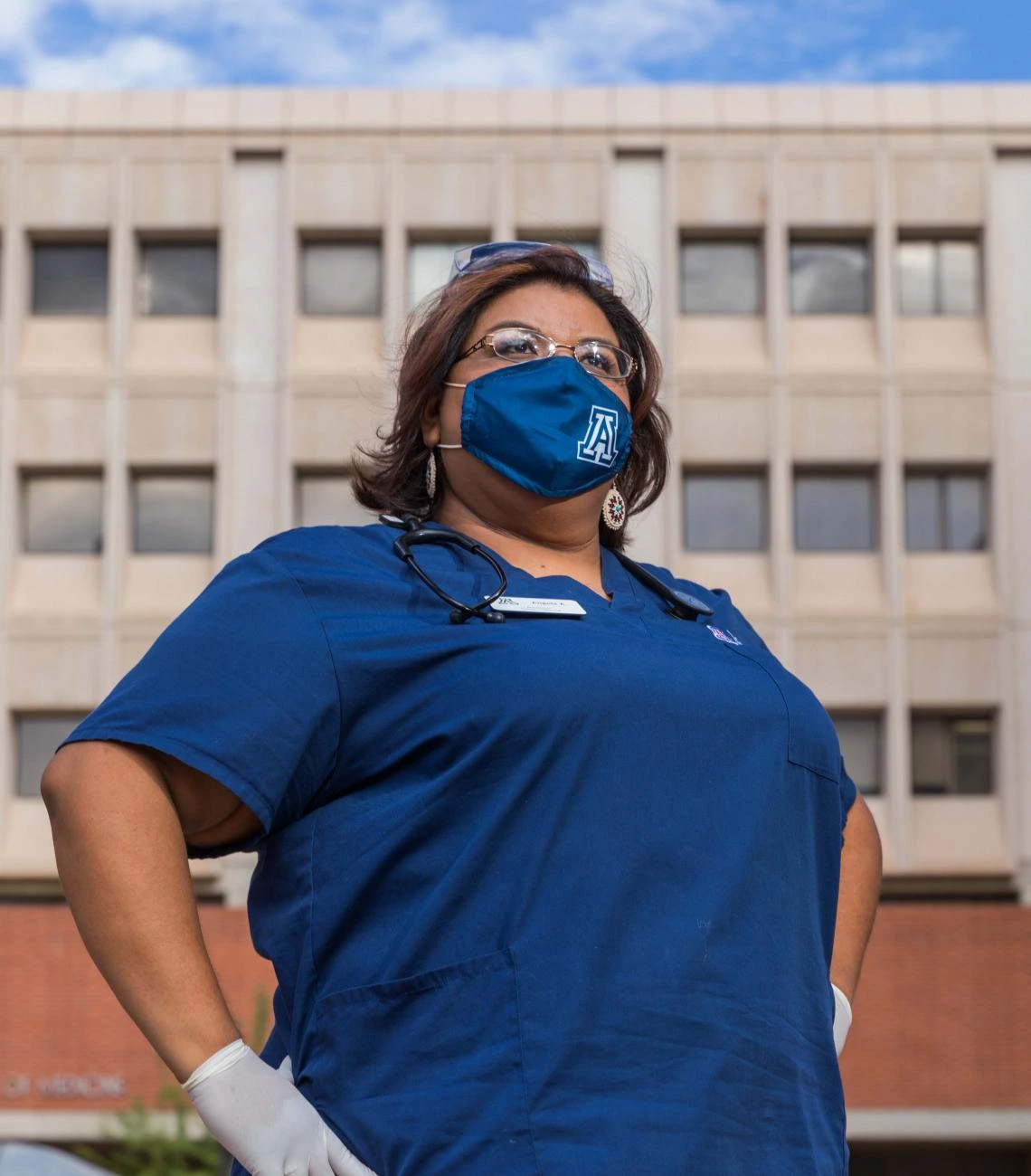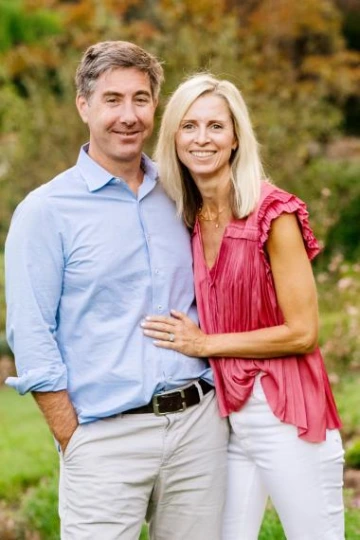Boosting Nursing Education Tech
Thanks to a gift made by Andrew and Kirsten Braccia, the College of Nursing will enhance both remote and in-person learning.

Andrew ’98 and Kirsten Braccia ’98 have made a $1.5 million gift to support students in the College of Nursing, COVID-19 initiatives and student-athletes whose eligibility has been extended.
The largest portion of the Braccias’ gift, $1 million, is being used by the College of Nursing to enhance both remote and in-person learning.
Kirsten Braccia graduated from the College of Nursing and worked as a registered nurse at the Lucile Packard Children’s Hospital on the Stanford University campus. Andrew Braccia, an alumnus of the Eller College of Management, is a venture capitalist with Accel Partners.

“I am so grateful to Andrew and Kirsten for their generosity and for being outstanding examples of what it means to be a Wildcat for Life,” says Robert C. Robbins, University of Arizona president. “Their partnership will have a huge impact in the lives of our nursing students as they transition to remote learning, which in turn will support the health and well-being of the many communities we serve.”
The College of Nursing is using the gift to enhance simulation-based learning capabilities at the Tucson, Phoenix and Gilbert campuses, and to purchase software that students can use remotely.
“Through the Braccias’ generous gift, we were able to purchase virtual and web-based simulation platforms and equipment that made it possible for students to experience realistic patient scenarios when they were not able to come to campus or attend in-person clinical rotations,” says Dean Ki Moore.
Purchases made as a result of the gift are many and broad-based. For remote learning, software enhancements are giving students opportunities to practice their skills through virtual patient encounters designed to supplement or replace experiences in a simulation center or patient-care setting. Live online telehealth encounters using standardized patients have also allowed students to practice clinical skills. Video production kits are helpful for faculty to produce skills-training demonstrations, and audiovisual equipment supports remote access to classroom sessions for students who need to isolate after returning to campus.
Procurement of additional simulation equipment and supplies has increased capacity both in remote environments and on campus. Live remote monitoring and video capture of simulation activities enhances debriefs and student learning.
For in-person learning, reconfiguring space and audiovisual technology across all three campuses has allowed safe, in-person skills training. At the college’s new Gilbert campus, funds will be used to expand and improve functionality within its simulation rooms to support program growth. In addition, both the Phoenix Biomedical and Gilbert campuses will receive new high-fidelity pediatric manikins.
“We are honored to partner with the Braccias as we advance the college as a leader in innovative technologies,” says Moore.
This story originally appeared on the Arizona Alumni Magazine website.
The Covid Cohort
Angela Acuna (pictured above) began her nursing studies in January 2020. “We call ourselves the COVID cohort. I think we were the first ones to get hit hard from semester one,” she says.
With most nursing classes online this semester, Acuna misses the classroom and daily access to equipment. She takes competency exams throughout the semester and has had to find creative ways to demonstrate her ability to perform skills from home, where she lacks the supplies nurses use.
“I do give praise to the instructors, because this was quite a scramble for them, too, to implement online learning.”
Acuna counts herself fortunate to participate in clinical rotations, working closely with registered nurses at local hospitals. Each facility has its own protocol for protecting nurses and students from COVID infection.
As part of a rotation, Acuna was able to observe, from a distance, a cesarean section. “It was amazing to see the fluidity of that scene,” says Acuna, speaking of the way nurses and doctors moved around each other.

